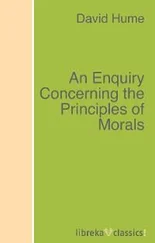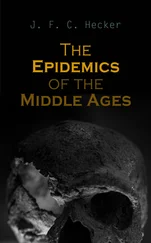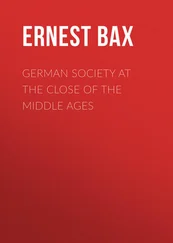But these consequences were not drawn immediately. It must never be forgotten that Constantine’s revolution was perhaps the most audacious act ever committed by an autocrat in disregard and defiance of the vast majority of his subjects. For at least four-fifths of the population of the Empire were still outside the Christian Church. 60The army and all the leading men in the administration were devoted to paganism. It is not, therefore, surprising that Constantine, who was a statesman as well as a convert, made no attempt to force the pace. His policy did little more than indicate and prepare the way for the gradual conversion of the Empire, and was so mild and cautious that it has been maintained by some that his aim was to establish a parity between the two religions.
He retained the title of Pontifex Maximus, and thereby the constitutional right of the Emperor to supervise the religious institutions. He withdrew the support of state funds from pagan rites, but made an exception in favour of the official cults at Rome. His most important repressive measure was the prohibition of the sacrifice of victims in the temples. 61One reason for this measure was the dangerous practice of divination by entrails, often employed by persons who contemplated a rebellion and desired to learn from the higher powers their chances of success.
In some particular places cults were suppressed, but a pagan could still worship freely in the temples, could offer incense and make libations of wine, and might even perform sacrificial rites in a private house. The sons of Constantine 62were indeed inclined to adopt a stringent policy, and their laws might lead us to suppose that there was something like a severe persecution. Constantius, in reaffirming the prohibition of sacrifices, menaced transgressors with the avenging sword. 63But the death penalty was never inflicted, and there was a vast difference between the letter of the law and the practice. In the same edict was ordained the closing of temples “in all places and cities,” but this order can only have been carried out here and there. Its execution depended on local circumstances, and on the sentiments of the provincial governors. In some places Christian fanatics took advantage of the Imperial decree to demolish heathen shrines, and the pagans were naturally very apprehensive. When Julian visited Ilion, he inspected the antiquities under the guidance of Pegasius, who was “nominally a bishop of the Galilaeans,” but really worshipped the Sun god. 64He had taken orders and succeeded in becoming a bishop in order that he might have the means of protecting the heathen sanctuaries from Christian destruction.
When paganism was restored by Julian, it is probable that any temples which had been closed under the edict of Constantius were again reopened, and after his fall it would seem that they were allowed to remain open for worship, though sacrifices were regarded as unlawful.
The Emperors Valentinian I 65and Valens were consistently tolerant. The mysteries of Eleusis were expressly permitted, for the proconsul of Achaia told Valentinian that if they were suppressed the Greeks would find life not worth living. 66But a new religious policy was inaugurated by Gratian and Theodosius the Great. Gratian abandoned the title of Pontifex Maximus; he withdrew the public money which was devoted to the cults of Rome, and he ordered the altar of Victory to be removed from the Senate-house, to the deep chagrin of the senators. The fathers appealed to Valentinian II to revoke this order, and to restore the public maintenance of the religious institutions of the capital; but the moving petition of Symmachus, who was their spokesman, was overruled by the influence of Ambrose, the archbishop of Milan, who possessed the ear of Valentinian and of Theodosius. 67
It remained for Theodosius to inflict a far heavier blow on the ancient cults of Greece and Rome. In the earlier years of his reign the extirpation of pagan worship does not seem to have been an aim of his policy. He was only concerned to enforce obedience to the laws prohibiting sacrifices, which had evidently been widely evaded. He decided on the closing of all sanctuaries in which the law had been broken. He entrusted to Cynegius, Praetorian Prefect of the East, a pious Christian, the congenial task of executing this order in Asia and Egypt. But otherwise temples were still legally open to worshippers. 68It is to be particularly noted that the Emperor did not desire to destroy but only to secularise such buildings as were condemned, and the cases of barbarous demolition of splendid buildings which occurred in these years were due to the fanatical zeal of monks and ecclesiastics. Monks wrought the destruction of the great temple of Edessa, and the Serapeum at Alexandria, which gave that city “the semblance of a sacred world,” 69was demolished under the direction of the archbishop Theophilus (A.D. 389), 70who thereby dealt an effective blow to the paganism of Alexandria.
But Theodosius and his ecclesiastical advisers thought that the time was now ripe to make a clean sweep of idolatry, and in A.D. 391 and 392 laws were issued which carried to its logical conclusion the act of Constantine. We may conjecture that this drastic legislation was principally due to the influence of the archbishop of Milan. To sacrifice, whether in public or in private, was henceforward to be punished as an act of treason. Fines were imposed on any who should frequent temples or shrines; and for worshipping images with incense, for hanging sacred fillets on trees, for building altars of turf, the penalty was confiscation of the house or property where such acts were performed. 71
In the insurrection of A.D. 392 the restoration of paganism was a capital feature in the programme of the general Arbogastes and Eugenius the creature whom he crowned, and the lure attracted some distinguished adherents. For a short time the altar of Victory was set up in the Roman Senate-house. After the suppression of the revolt Theodosius visited Rome, attended a meeting of the Senate, and though his tone was conciliatory, his firmness compelled that body to decree the abolition of the ancient religious institutions of Rome. 72Some of the pagan senators had Christian families, 73and domestic influence may have reinforced the imperial will.
The last years of the fourth century mark an epoch in the decay of paganism. While the gods were irrevocably driven from Rome itself, time-honoured institutions of Greece also came to an end. The old oracles seem to have been silenced at a much earlier date. The “last oracle” of the Delphic god, said to have been delivered to Julian, is a sad and moving expression of the passing away of the old order of things.
Tell the king on earth has fallen the glorious dwelling,
And the water springs that spake are quenched and dead, Not a cell is left the god, no roof, no cover;
In his hand the prophet laurel flowers no more. 74The Olympian games were celebrated for the last time in A.D. 393, and the chryselephantine statue of Zeus, the greatest monument of the genius of Pheidias, was removed soon afterwards from Olympia to Constantinople. 75The Eleusinian mysteries ceased three years later in consequence of the injuries wrought to the sanctuaries by the invasion of Alaric. 76The legend that Athens was saved from the rapacity of the Goths by the appearance of Athene Promachos and the hero Achilles illustrates the vitality of pagan superstition. Athens had fared better than many other towns at the hands of the Emperors. 77Constantine, who ransacked Hellenic shrines for works of art in order to adorn his new capital, spared Athens; and in the reign of Theodosius, when the Samian Hera of Lysippus, the Cnidian Aphrodite of Praxiteles, the Athene of Lindos were carried off, the Parthenon was not compelled to surrender the ivory and gold Athene of Pheidias. Soon after A.D. 429 this precious work was ravished from the Acropolis, 78but we do not know its fate. Nor do we know at what date the Parthenon was converted into a church of the Virgin. 79
Читать дальше












